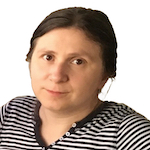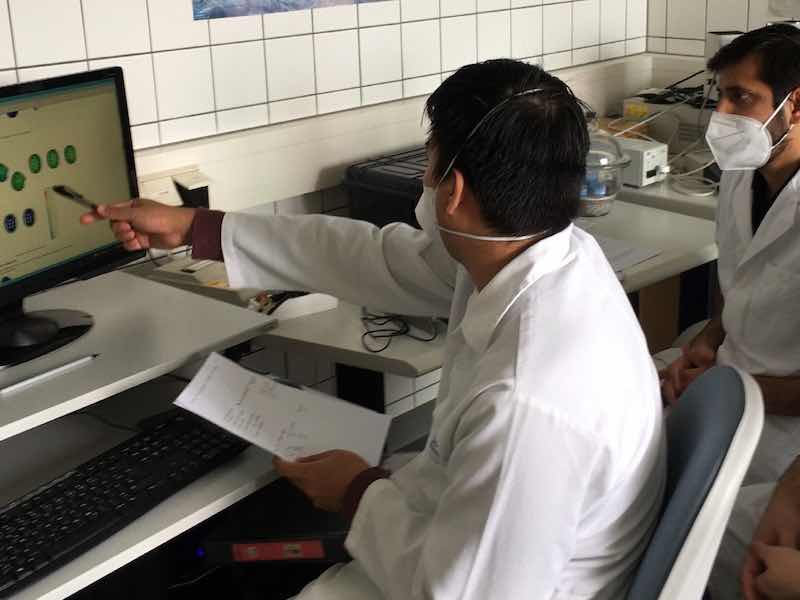This is a feature interview with Dr. Adriana Ispas, Research Associate, Technische Universitaet Ilmenau (TU Ilmenau), Germany.
Thank you for speaking with us, Adriana. Firstly, please tell us a bit more about yourself and your research activities at the TU Ilmenau.
 Dr. Adriana IspasThank you for having me. Since 2010, I am a Research Associate at the TU Ilmenau, where I have been teaching electrochemistry and electroplating group. The TU Ilmenau is the exclusive university in Germany to offer a master’s program that includes electrochemistry and applied electroplating courses, besides electrocrystallization and electrochemical corrosion. Our activities and research related to this department are mainly focused on: functional and decorative electroplating, various deposition processes, including deposition of magnetic layers and magneto-electrochemistry, conductive polymers, dispersion coatings, and of course, research in batteries related to energy storage, anode & cathodes, redox flow batteries.
Dr. Adriana IspasThank you for having me. Since 2010, I am a Research Associate at the TU Ilmenau, where I have been teaching electrochemistry and electroplating group. The TU Ilmenau is the exclusive university in Germany to offer a master’s program that includes electrochemistry and applied electroplating courses, besides electrocrystallization and electrochemical corrosion. Our activities and research related to this department are mainly focused on: functional and decorative electroplating, various deposition processes, including deposition of magnetic layers and magneto-electrochemistry, conductive polymers, dispersion coatings, and of course, research in batteries related to energy storage, anode & cathodes, redox flow batteries.
How did you hear about Elsyca’s solutions, and how do you use them within your courses?
At TU Ilmenau, we do put great importance to practice-oriented education. In one of the program’s modules I am in charge of, namely, in the “Applied Electroplating” course of practical experiments, we have decided to have a part dedicated to the simulation of Galvano technical processes. For that purpose, we choose to use Elsyca’s solution Elsyca PlatingManager which is a Computational Aided Engineering reference solution in the electroplating industry. The objective of this module is to introduce students to the Elsyca PlatingManager solution following some of the available tutorials and to teach them how to write electroplating protocols with the guidance of a numerical solution.
That sounds very interesting but also challenging, isn’t it?
Indeed, this might sound challenging for students at first, but the ease of use of the software allows them to quickly become autonomous and focus on the most interesting part: the analysis of the simulation results. The purpose here is to perform trials and error analyses so that the students get a good understanding of what are the electroplating challenges and what can impact the quality of an electroplating process. This is key to defining protocols that would optimize the final plating quality. In addition to the ease of use, as the solver is very fast and accurate, it is easy for them to quickly explore multiple plating configurations and assess the impact of geometries and arrangement, for instance.
In your opinion, what are the benefits for the students to use such a tool?
Being able to learn and use a solution that is an industry-standard solution for many industries around the world is a great experience for students. It also provides them with an opportunity to deepen their understanding of the field, boost their theoretical knowledge, and learn more about how software can optimize electroplating processes. It prepares them for what the industry is now moving toward for some years: the use of digital twin solutions. Introducing this concept during their study and allowing them to use related tools make them ready for what the professional market is expecting. Some of them will have to work on further improving industrial processes or making sure industry standards are met. For both aspects, the ability to use simulation early within the design stage and analyze the outcomes of these simulations is a valuable asset for any electroplating engineer.
What are the feedbacks from the students?
Generally speaking, our students do appreciate the fact that they have the ability to get their hands on an industry-proven solution. Of course, the best is to let them speak for themselves, which is the reason why I have asked some students from my last classes in Electrochemistry and Electroplating Master Module to provide their feedback.
Feedback from Students:
Kai Gestner, Master student:
“In the practical experiment on the topic of ‘Simulation of Galvano technical processes,’ we were able to gain a deeper understanding of the simulation of electrochemical deposition processes of metallic layers with Elsyca’s software. The simulation software enables uncomplicated and comprehensible modeling and calculation of various problems. We particularly liked the quick detection of the influence of apertures and auxiliary electrodes to improve the layer thickness distribution on components with complicated geometries. [...] the Elsyca software was very enriching for us, and we thank you for the opportunity to use it.”
Akam Hajiabbasi, Master student
“The key advantage of the Elsyca software is that the simulation can predict the plating thickness in any area of any part on the plating rack with 90-95 percent confidence. This is important to understand the impact of part design, size, geometry, and the ability to plate within specification. I believe Elsyca PlatingManager offers several benefits to companies, including providing useful analytical data for use during the design phase and discussions with colleagues. For example, the software shows the impact of design on electroplating and serves as a guide for engineers in terms of flange depth, geometry, depth ratio, radii, and height ratios, among others.”
Muhammad Fahad, Master student
“The program was very helpful and easy to use. The program showed us clear pictures of how the coating changes by changing the different parameters. In general, we can say that the program has further improved our knowledge in the field of electroplating.”
Jesús Valdés, Master student
“Elsyca PlatingManager makes it easier to find correlations between the layer thickness of deposited metal and real variable factors such as time, current, and positioning of the workpieces. I like the software because the clear and colorful diagrams make it easier and quicker to see which areas are below or above the target thickness.”
Visit www.elsyca.com































